Once known as Ecbatana, Hamadan is believed to be one of the oldest cities in Iran. It boasts a population of nearly half a million people and is the capital of the western Hamadan Province. It is believed that a lot of the old Ecbatana is buried beneath the modern city and like many old Iranian cities, it has a fascinating but tumultuous history.
Hamadan was established as the capital of the Median Empire (The Medes) around 650 BC. It later fell to the Archaemenid Persians with King Cyrus using it for his summer court. The city then known as Hagmataneh or "Meeting Place" played a key role in controlling the trading routes of the Royal Road to Babylon and was indeed a significant staging post on the Old Silk Road. In 521 BC Hamadan was overtaken by the Archaemenid King Darius the Great.
It is hard to get your head around the enormity of the Persian rule during the Archaemenid era. During this time the Persian Empire comprised Iran, Mespotamia, Syria, Egypt, Asia Minor with its Greek towns and some islands, Caucasus, Thrace and parts of India. The founder of this largest empire of the ancient world was Cyrus the Great (559-530 BC). After his death, Cyrus' son Cambyses II conquered Egypt and a good part of what is now modern Libya. His was suceeded by Darius I (Darius the Great) who took over what was by then an empire in great disarray. Within a little more than a year after Cambyses' death, Darius had suceeded in establishing his rule over rebellious leaders of the Medes, Babylonians and the other peoples that Cyrus had conquered.
Alexander the Great on his epic journey through the Middle East and beyond to Afghanistan and then to Pakistan and India, captured Hamadan in 330 BC and made it his army headquarters in Iran. And after centuries of wealth and pre-eminence under Parthian and Sassanian dynasties it fell to the devastations of the Mongols in 1220 and then to the brutal forces of Tamerlame in 1386. We did wonder why these invaders had to be so ruthlessly savage and destructive of the cities they conquered yet afterwards built some simply magnicent cities themselves. We guessed it was the old adage "either them or us", And of course brutality and destruction would have been very powerful tools to keep the locals well and truly under control.
Poor Hamadan was invaded by Turkish forces in the mid 18th century and later it was the scene of heavy fighting during World War 1. The city was returned to the Iranian government in 1918 at the end of the war. Today modern Hamadan still functions as a major trading hub as a result of its location on the main road network between Iran and the Middle East.
That morning Mohammad drove us around the city of Hamadan. Designed by German engineer Karl Frisch in 1929, the present day city is based on a curious cartwheel design with numerous flower studded roundabouts. In the distance are the Alvand Mountains, the second highest peaks in Iran. It is situated in an attractive setting, although the city itself is rather bland.
Like our entire tour in Iran, this day was jam packed with visits to historic sites. So many in fact that it was difficult to remember them all. So, for ease of reading and ease of my memory and efforts in trying to decipher my copious notes, from now on I will include only the sites that we found to be most interesting.
We politely declined visiting the Esther and Mordecai Tombs as we drove past them toward the Imam Khomeini Square. After all, we had seen a considerable number of mausoleums and also we knew that there is some discussion as to who is actually buried there. It is interesting however that for centuries the tombs have been particularly significant for Iranian Jewish pilgrimages. We were rather surprised that Judaism and Zoroastrian religions are officially recognised in an Islamic republic.
From Hamadan we travelled west along the slopes of the Alvand mountains through pretty mountain countryside to Ganjnameh. Fruit trees were in bud and quaint mud brick houses surrounded by stone walls dotted the landscape. A little snow had settled in the higher areas. It made for a very pleasant but short drive.
Ganjnameh is the site of ancient cuneiform rock inscriptions written by Darius the Great and his son Xerxes (485-466 BC), and is a popular tourist attraction. It seems that Xerxes had quite an ego. His script literally translates as a thank you to the Zoroastrian god Ahuramazda for making him such a brilliant king: "The Great God (is) Ahuramazda, greatest of all gods, who created earth and the sky and the people; who made Xerxes king, and outstanding king as outstanding ruler among innumerable rulers; I (am) the great king Xerxes, king of kings, king of land with numerous inhabitants, king of this vast kingdom with far away territories, son of Achaemenid monarch Darius".
Just beyond the inscriptions was a nine meter waterfall, apparently a popular ice-climbing spot when it is frozen over in winter. The place was teeming with children on school excursions who again were obviously fascinated by us. They were overwhelmingly friendly, and mad keen to practice their English. Everywhere we went, we were finding the Iranian people and especially the school children to be overtly friendly and interested in where we were from. Their degree of excitement, however, did make us wonder how often they encountered European looking tourists.
The road to Kermanshah heads south-west toward the Iraq border. On the way we noticed signs "Karbala 615 kms". Karbala in Iraq is one of the most holiest cities in the world for Shi'ah Muslims. It has a tumultuous history and even today is the site for massive pilgrimages of Iranian Shiite peoples. It felt slightly eerie to be so close to a country that has had, and still has, such a brutal and warsome history.
Some 50 kms from Hamadan we drove through the fertile Kangavar Valley. The surrounding landscape of rolling green hills gave way to intensively farmed country with newly emerged green wheat crops and numerous plastic covered "glass houses" providing cover for crops of melons, tomatoes and cucumbers. Mohammad told us that some of the country's best vegetables were grown in the surrounding valley area.
Kangavar is home to the famous Anahita Temple. Now in ruins, it is thought to have been one of the great stone buildings in the world and was supposedly a place of sacrificial rituals. We wandered over the huge ruins area gazing at the scattered bases of enormous pillars and columns. The remains of vast stone walls revealed ingenious architectural skills, with massive stones fitting neatly into each other without the use of any mortar agent. As there was not a lot of structures of any size remaining, it was difficult to imagine that it was once a magnificent complex. It is thought that a lot of the damage to the site was due to successive earthquakes.
On our way to Kemanshah, we visited the wonderful historic site of Bisotun. The site covers an area of some 116 hectares. Archaeological evidence suggests that the region was inhabited as far back as 40,000 years ago. High up on the buff coloured cliffs of Mount Bisotun are a series of magnificent bas-relief carvings overlooking a pleasantly landscaped pond and an old but renovated caravanserai. There are some sixteen different historical monuments in the complex. The highlights for us were the Darius inscriptions and the fabulous carved Seleucid Figure of Hercules.
Authored by Darius the Great, his inscriptions provide an autobiography and a lengthy description of a series of battles he claimed were his personal victories.
The inscription of Darius is six meters in length and represents Darius' conquest over his enemies. The prisoners are in front of the king, looking depressed, while their leader Gaumata lies under the foot of Darius. His hands facing upward indicate his submission to the king. Above the heads of the captives, Faravahar the Zoroastrian symbol of Ahuramazda, is granting the ring of power to the king. At the end of the inscription, Darius places a curse on anyone who dares to damage the relief. We could not actually see much of the inscription as it was largely covered by scaffolding. But is was remarkable that such an ancient site is so well preserved today, given its history dates back to a mind boggling 480 BC.
We gazed for some time also at the gorgeous carved Seleucid figure of Hercules, also perched high on a biscuit dry cliff face. The figure represents the most famous Greek hero who is shown curly haired and naked while resting on a lion skin. According to the inscription, the figure was carved in 148 BC on the occasion of a conquest for the Greeks against the Parthians.
We could not help but lose ourselves in the wonderful atmosphere and history of such a significant and ancient site. But it came to a rude and abrupt end when to our shock and amazement we heard loud voices yelling "Aussie, Aussie, Aussie - Oi, Oi, Oi. We cringed. The voices belonged to a couple of young people we had met on the foot trail up to the inscription site. The young Iranian man and his Russian wife had been extremely friendly and had talked with us for some time. But where did they learn that awful, awful mantra?.
We were some kilometers from the Iraq border on our way to Khorramabad when we were stopped by officials at a border check site. Our passports were taken and apparently had to be photocopied for security purposes. It was not a comforting feeling to surrender our passports, especially when we saw one of the officials run from the check point up a very steep hill, some several hundred meters away from our car to a concrete shack of a building and slam the door closed. About a half an hour later the official emerged, ran flat out back down the hill to our car and breathlessly returned our passports. We guessed the photocopier was playing up. It would have been a rather comical sight had we not been so concerned about retrieving our documents. Being without a passport in Iran is not a good idea at any time.
The road passed through an attractive rolling green irrigated landscape before we arrived in the city of Khorramabad situated within the famous Zagros Mountains. Outskirts of cities are never appealing but Khorramabad was simply depressing. Poor shepherds attended their sheep and goats who foraged on scant pasture. Closer to the city were lines of shanty buildings sealed with corroded roller doors, comprising makeshift mechanical shops and the occasional store. We were always surprised at the vast number of motor mechanics shops in Iran. It seemed that every second shop was attended by grease blackened men pouring over the insides of sick motor vehicles.
As it happened, this was just as well as Mohammad's car was beginning to show signs of stress, missing as soon as we met with any incline at all. Even though Mohammad had the air conditioning turned on, in the rear seat of his car I was constantly hot and bothered. My neck to ankles gear and my head scarf didn't help either.
Although we had enjoyed our day, our hearts sank as we drove into our Shahdari Hotel in downtown Khorramabad. Our room was worse than basic. It was filthy and had no cooling at all - except for the windows. The hotel was described by Ms Pari in her literature as being four star (she did qualify though, that it was rated by Iranian standards) with "very nice view to the Falakolaflak Citadel" in the centre of the city. We couldn't see anything of the citadel so Mohammad organised another room on a higher floor. It was similarly dirty but it did have views of the citadel.
We were disappointed. How much worse were these hotels going to get? I decided to take action and spoke to Ms Pari in Tehran by phone. It didn't help. She emphasised that the hotels, as she had rightly pointed out, were rated differently from international standards. It was even worse to hear that we would not have any air conditioning at hotels for the rest of our trip. And more depressing, we knew that our next destinations were some of the hottest cities in Iran. That was the news. And we had another eleven days to go....
Dinner was a quiet affair and we decided on an early night. Oh, a beer would have been good that evening. It was extremely hot in the hotel room so we decided to open the windows to let some air in. To our surprise, into our room flew an army of flying cockroaches - not the little Blatella germanica guys but the big fat Periplaneta americana variety. Alan looked at me and grinned. "Just think of what an amusing entry this will make in your travelogue".
There was not a lot to do, not even a blessed can of Pepsi Cola could be found, so we decided to go to bed. Oh, but there were no sheets. They were packaged in a cellophane package on the floor and so we had to make our own beds up. It was not a great stay in Khorramabad....
To Khorramabad: Connecting With the Archaemenids
Thursday, April 21, 2011
 Khorramabad, Lorestān, Iran
Khorramabad, Lorestān, Iran
Other Entries
-
1Introduction
Apr 1011 days prior Crowdy Head, Australiaphoto_camera0videocam 0comment 0
Crowdy Head, Australiaphoto_camera0videocam 0comment 0 -
2HISTORICAL TIMELINE
Apr 1110 days prior Crowdy Head, Australiaphoto_camera1videocam 0comment 0
Crowdy Head, Australiaphoto_camera1videocam 0comment 0 -
3Bon Voyage - or the Last Supper?
Apr 1110 days prior Crowdy Head, Australiaphoto_camera1videocam 0comment 0
Crowdy Head, Australiaphoto_camera1videocam 0comment 0 -
4Pssst - Most People in Western China are Muslim...
Apr 1110 days prior Sydney, Australiaphoto_camera3videocam 0comment 0
Sydney, Australiaphoto_camera3videocam 0comment 0 -
5Just a Fleeting Stay in Shanghai
Apr 129 days prior Shanghai, Chinaphoto_camera2videocam 0comment 0
Shanghai, Chinaphoto_camera2videocam 0comment 0 -
6Back
Apr 138 days prior Urumqi, Chinaphoto_camera4videocam 0comment 0
Urumqi, Chinaphoto_camera4videocam 0comment 0 -
7Everything is Grand and White in Ashgabat
Apr 147 days prior Ashgabat, Turkmenistanphoto_camera18videocam 0comment 0
Ashgabat, Turkmenistanphoto_camera18videocam 0comment 0 -
8Ancient Gonur - Good Morning Mr Sarianidi!
Apr 174 days prior Mary, Turkmenistanphoto_camera12videocam 0comment 0
Mary, Turkmenistanphoto_camera12videocam 0comment 0 -
9Stumbling Over the Border and Into Iran
Apr 183 days prior Mashad, Iranphoto_camera2videocam 0comment 0
Mashad, Iranphoto_camera2videocam 0comment 0 -
10Mashad - Our Confronting Introduction to Iran
Apr 183 days prior Mashad, Iranphoto_camera9videocam 0comment 0
Mashad, Iranphoto_camera9videocam 0comment 0 -
11Around Mashad - Mausoleums of Two Literary Giants
Apr 192 days prior Tehran, Iranphoto_camera7videocam 0comment 0
Tehran, Iranphoto_camera7videocam 0comment 0 -
12Tehran to Hamadan - So Dizi My Head is Spinning...
Apr 201 day prior Hamadan, Iranphoto_camera8videocam 0comment 0
Hamadan, Iranphoto_camera8videocam 0comment 0 -
13To Khorramabad: Connecting With the Archaemenids
Apr 21 Khorramabad, Iranphoto_camera11videocam 0comment 0
Khorramabad, Iranphoto_camera11videocam 0comment 0 -
14"If You Were Israeli - I Cut Your Throat!"
Apr 221 day later Ahvaz, Iranphoto_camera7videocam 0comment 0
Ahvaz, Iranphoto_camera7videocam 0comment 0 -
15Iran-Iraq War Martyrs: Flying the Fallen
Apr 232 days later Shiraz, Iranphoto_camera8videocam 0comment 0
Shiraz, Iranphoto_camera8videocam 0comment 0 -
16Perceptions of Persepolis: Grandeur of the Ruins
Apr 243 days later Shiraz, Iranphoto_camera8videocam 0comment 0
Shiraz, Iranphoto_camera8videocam 0comment 0 -
17Photo Gallery of Persepolis and Naqsh-E Rostam
Apr 243 days later Shiraz, Iranphoto_camera16videocam 0comment 0
Shiraz, Iranphoto_camera16videocam 0comment 0 -
18Today: The First Day of the Remainder of Your Life
Apr 254 days later Kerman, Iranphoto_camera16videocam 0comment 0
Kerman, Iranphoto_camera16videocam 0comment 0 -
19Yazd - Such a Lovely Place, Such a Lovely Place...
Apr 276 days later Yazd, Iranphoto_camera14videocam 0comment 0
Yazd, Iranphoto_camera14videocam 0comment 0 -
20Toward Esfahan - "The Jewel of Ancient Persia"
Apr 287 days later Esfahan, Iranphoto_camera34videocam 0comment 0
Esfahan, Iranphoto_camera34videocam 0comment 0 -
21A Gorgeous Carpet, Jolfa and Fascinating Abyaneh
Apr 309 days later Abyaneh, Iranphoto_camera9videocam 0comment 0
Abyaneh, Iranphoto_camera9videocam 0comment 0 -
22Photo Gallery of Abyaneh Village
Apr 309 days later Abyaneh, Iranphoto_camera13videocam 0comment 0
Abyaneh, Iranphoto_camera13videocam 0comment 0 -
23Destination Tehran - Reflections on our Travels
May 0110 days later Tehran, Iranphoto_camera13videocam 0comment 0
Tehran, Iranphoto_camera13videocam 0comment 0 -
24Osama bin Laden Dead - Our Travel Plans in Chaos
May 0211 days later Dubai, United Arab Emirates, United Arab Emiratesphoto_camera11videocam 0comment 0
Dubai, United Arab Emirates, United Arab Emiratesphoto_camera11videocam 0comment 0 -
25For Better or For Worse - We Head off to Islamabad
May 0312 days later Islamabad, Pakistanphoto_camera4videocam 0comment 0
Islamabad, Pakistanphoto_camera4videocam 0comment 0 -
26Eclectic Chitral - North West Frontier Province
May 0413 days later Chitral, Pakistanphoto_camera14videocam 0comment 0
Chitral, Pakistanphoto_camera14videocam 0comment 0 -
27The Wonderful Faces of Chitral Town
May 0413 days later Chitral, Pakistanphoto_camera8videocam 0comment 0
Chitral, Pakistanphoto_camera8videocam 0comment 0 -
28A Four-Seater Jeep, Six People & Two Kalashnikovs
May 0514 days later Bomburet, Pakistanphoto_camera15videocam 0comment 1
Bomburet, Pakistanphoto_camera15videocam 0comment 1 -
29Love Affair with Rumbur, A Sick Jeep Trip to Buni
May 0615 days later Buni, Pakistanphoto_camera9videocam 0comment 0
Buni, Pakistanphoto_camera9videocam 0comment 0 -
30Insight into the Life of the Lost Kalasha People
May 0615 days later Buni, Pakistanphoto_camera8videocam 0comment 3
Buni, Pakistanphoto_camera8videocam 0comment 3 -
31More Photos of the Kalasha Peoples
May 0615 days later Buni, Pakistanphoto_camera14videocam 0comment 0
Buni, Pakistanphoto_camera14videocam 0comment 0

 Khorramabad, Lorestān, Iran
Khorramabad, Lorestān, Iran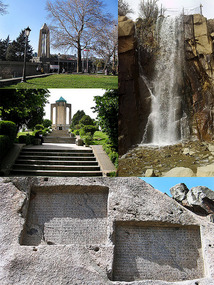
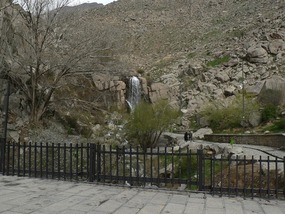
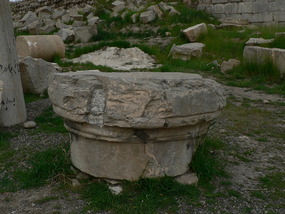
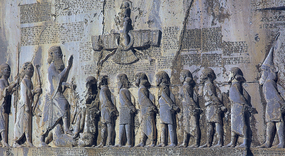
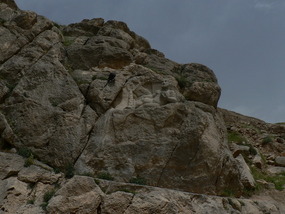
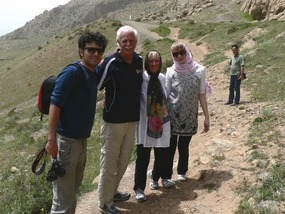
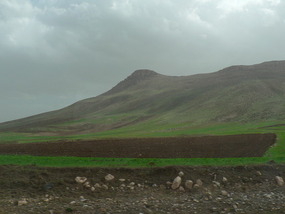
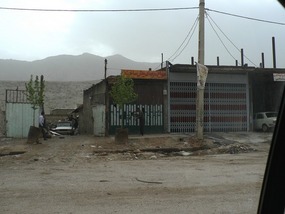
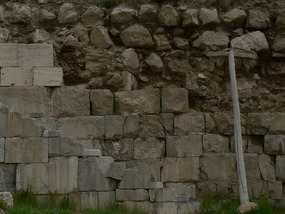
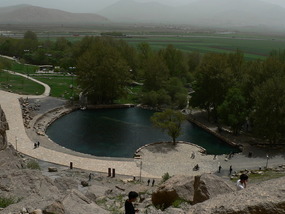
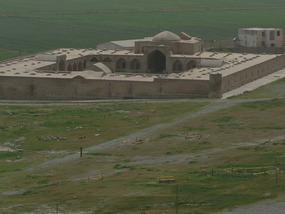






2025-05-22